
When the students in Assistant Professor Carolina Mehaffy’s laboratory research course had to start a big experiment all over again, they decided to start talking to the cells.
“We had an inside joke that the cells we were working with could smell our fear and knew when we were nervous,” said Carole Ryan, a biomedical sciences junior.
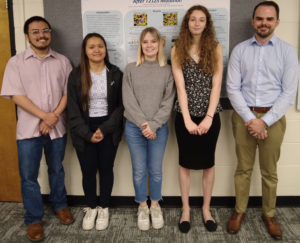
“We made a pact to act confident and talk to the cells like we knew what we were doing—and it worked!” said Camryn Nesiba, a biomedical sciences senior.
Ryan and Nesiba, together with their three classmates and Mehaffy, spent the semester working as a tight-knit group to contribute valuable new computational protein modeling data to a National Science Foundation project.
Every semester, different sections of the College of Veterinary Medicine and Biomedical Sciences’ unique Course-Based Undergraduate Research Experiences (CURE labs) fully engage students in novel, real-world research efforts tailored to each of the undergraduate major focus areas.
From analyzing soil samples to learning next-generation sequencing, instructors from across the college develop diverse CURE labs to immerse students in a wide range of relevant and applicable research topics and projects. In the process, students learn a suite of crucial laboratory skills that span from basic to highly sophisticated, and gain direct experience with what they will encounter in the working world of science.

“I have taken this course twice because I really want to go into research as a career,” said Andrew Wilson, a microbiology senior. “And there was no overlap, they were completely different research experiences. As I set out to go into the field professionally, I know I won’t have to have my hand held through everything—I know I have what it takes to complete experiments.”
“We learned so many lab techniques and skills in this course that I had never even heard of,” said Kyle Hudick, a biomedical sciences senior. “And being able to work so closely with the other students and the instructor on what felt like a really important project was so valuable to me.”
A new paradigm in undergraduate education
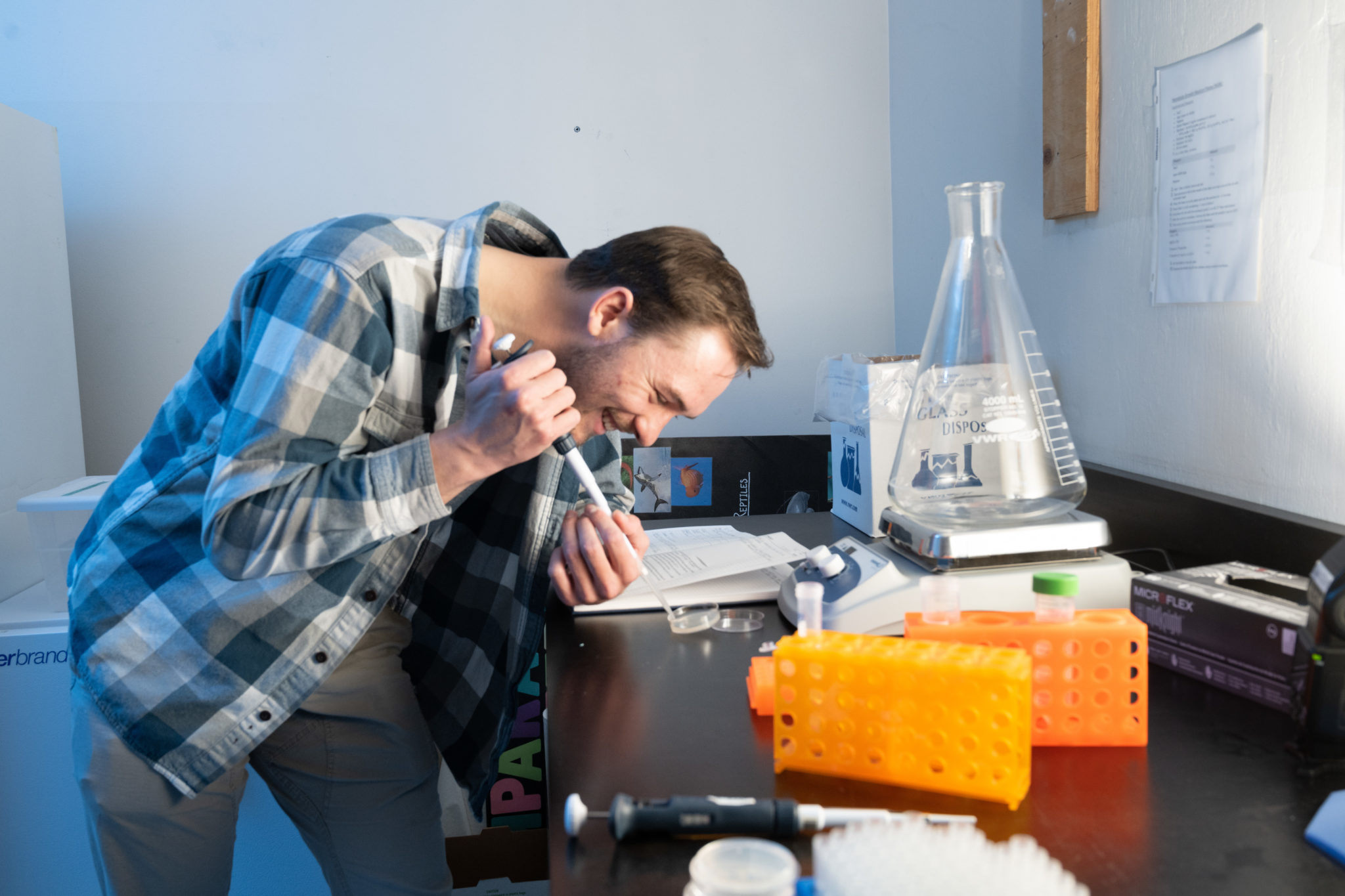
The purpose of the college’s CURE labs to is to make science more accessible to undergraduate students.
“It is a completely different way of teaching science that is more along the lines of how we actually do it,” said Traci Kinkel, an instructor whose CURE lab this summer will compare soil microbiomes in burned and unburned forests. “We give students a safe space to learn the skills that they need to apply in a real research position.”
An introductory CURE lab is now available to all biomedical sciences majors and is used to train first-year students on the basic skills needed in a research lab. The other sections are designed for juniors and seniors. Together, these courses provide a path for students to meaningfully engage with research throughout their entire undergraduate experience.
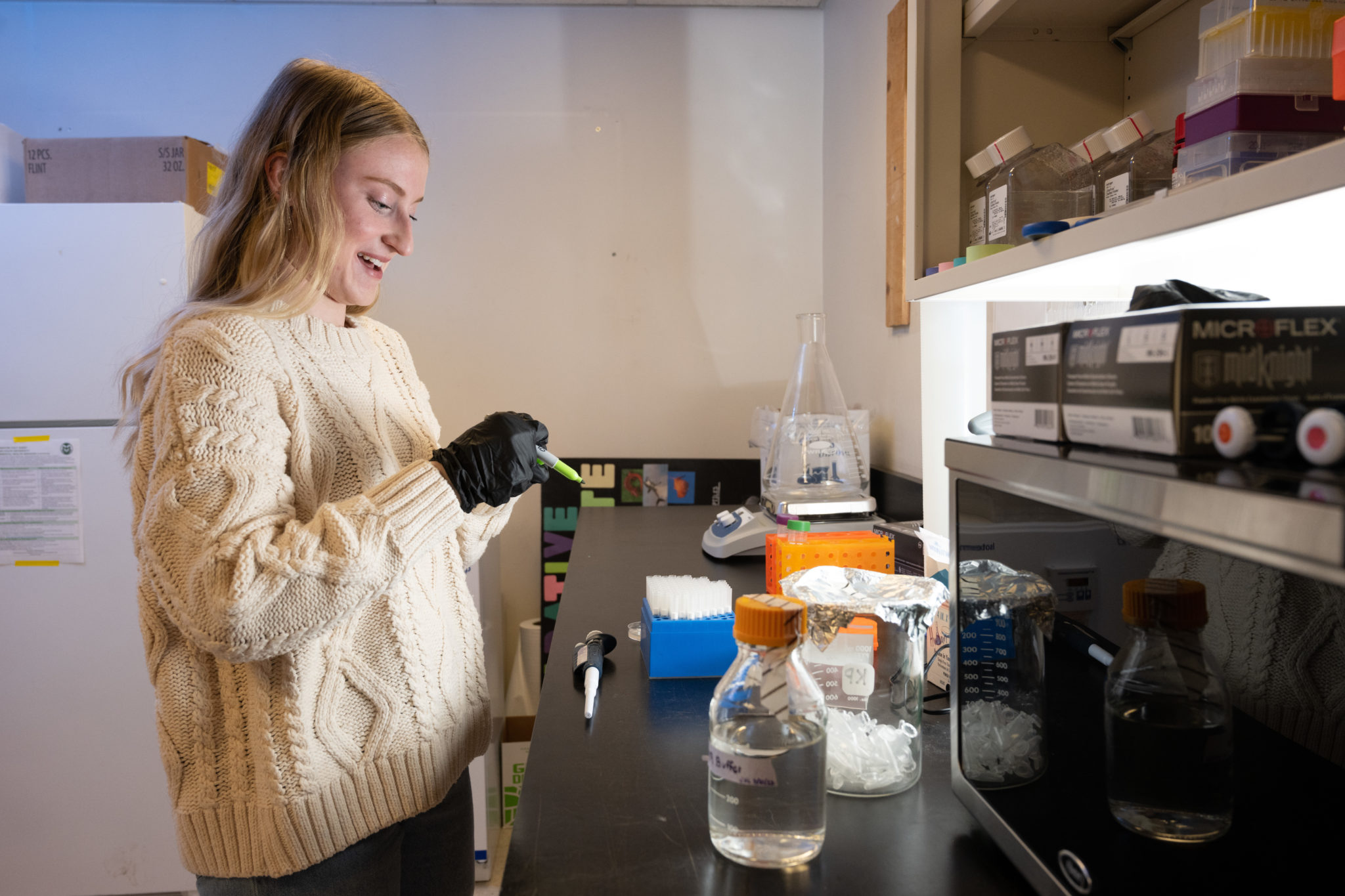
“This is real, relevant, and applicable hands-on research—it is not hypothetical stuff,” said Assistant Professor Grace Borlee, whose past CURE labs have included studying insect microbiomes. “It is amazing to watch the students get that spark and grow as researchers, they truly blossom over the course of just one semester. By the end of it, when they walk in the lab they know what they are doing.”

“The change is huge,” said Bettina Broeckling, who co-instructed a CURE lab with Borlee this semester that focused on SARS-CoV-2 wastewater surveillance. “Everyone starts the semester at slightly different experience levels and with some hesitation, but they all become so independent. I love the small class size and being able to form relationships and guide them through learning all these new things.”
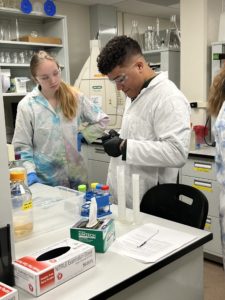
CURE lab students not only learn the hands-on specialized skills of conducting real-world research, they also gain experience giving formal presentations. Some go on to pursue additional research questions stemming from their initial CURE lab projects for their honors thesis and professional conferences, or end up with their names on publications.
“The students learn to work together, to talk about and communicate science, to develop and test a hypothesis, to problem-solve when a protocol doesn’t work, and to use new technology,” said Associate Professor Leslie Stone-Roy, whose CURE lab students are wrapping up an investigation into how the transparent worms C. elegans behave and detect chemicals in the environment. “Now, when they go into a research lab, they will know what to do.”
“The most rewarding aspect of this course is the project ownership the students feel,” said Professor Susan Tsunoda, whose CURE lab topics include studying aspects of epilepsy, sleep patterns, and metabolic diseases such as Type-2 diabetes. “These bright and curious undergrads are ready for more than labs that just confirm or demonstrate what they have been taught in the classroom, they are ready to see what they can do with that knowledge in a real research setting.”
Confidence to pursue their own research path

Mehaffy encourages her students to continue doing independent research with her after they complete the course. Her fall CURE lab will focus on pigmented bacteria and their use in the biomedical industry.
“It is very rewarding to interact with the students as a scientist and to show them the research field and all the different things that they can do in it,” Mehaffy says. “Even when their results are not what is expected, they learn how that is a real part of the research process. Most of them get really excited about the work they are doing and want to continue it.”
“When we had to start our experiment over, Dr. Mehaffy told us, ‘it’s ok, you got this—mistakes are ok,’” said Joanna Santibanez, a microbiology senior. “We learned to be confident in ourselves and to problem solve as a team.”
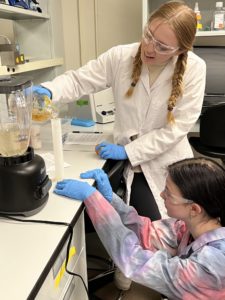
The college’s CURE labs will continue to grow and reach more students as additional state-of-art laboratory space and infrastructure is added, most notably with the Biomedical Discovery Center, a new building which is in the early stages of planning.
“I was nervous when I walked in on the first day of this class,” said Nesiba, who hopes to attend medical school and work in clinical pathology. “I had never done any of this stuff, but once I learned about the project I could not stop talking about it. I was so excited to actually be able to see where my work was going. I began working in a different lab in the middle of the semester and it was amazing to see the skills I was gaining directly carry over—I am so much more confident in my job. I don’t know what I would do if I was not in science, it truly is a field with endless opportunities.”